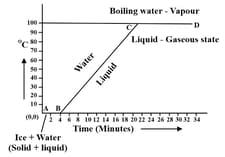The amount of heat required to change liquid to gas and vice versa without any change in temperature is termed as___
Important Questions on Heat Transfer
Due to cold weather, a water pipe of cross-sectional area is filled with ice at Resistive heating is used to melt the ice. Current of is passed through resistance. Assuming that all the heat produced is used for melting, what is the minimum time required?
(Given latent heat of fusion for water/ice specific heat of ice and density of ice
Two different liquids of same mass are kept in two identical vessel, which are placed in a freezer that extracts heat from them at the same rate causing each liquid to transform into a solid. The schematic figure below shows the temperaure vs time plot for the two materials. We denote the specific heat in the liquid states to be and for materials and respectively, and latent heats of fusion and respectively.
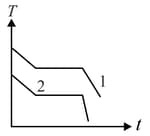
Choose the correct option.
Two different liquids of same mass are kept in two identical vessels, which are placed in a freezer that extracts heat from them at the same rate causing each liquid to transform into a solid. The schematic figure below shows the temperature T vs time t plot for the two materials. We denote the specific heat of materials in the liquid (solid) states to be and respectively.
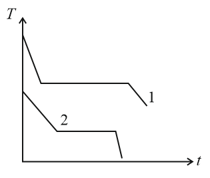
When heat is supplied at equal rates to three substances and their temperatures are plotted against time, the following graph is obtained. Which material among and has the least heat capacity?
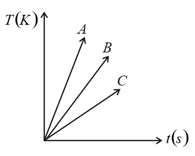
A horizontal fire hose with a nozzle of cross-sectional area delivers a cubic metre of water in What will be the maximum possible increase in the temperature of water while it hits a rigid wall (neglecting the effect of gravity)?
, where is a constant with appropriate dimension while is a constant with dimension of temperature. The heat capacity of the metal is:
How much ice at must be dropped into a cup containing of water at in order for the temperature of the water to be reduced to ? The cup itself has a mass of and is made out of aluminium. Assume that no energy is lost to the surroundings.
Specific heat capacity of ice specific latent heat of fusion of ice specific heat capacity of water
Write the quadrants in which the following points lie:
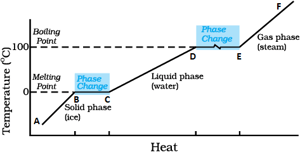
Identify the part representing latent heat of fusion in the temperature vs heat graph for melting of ice.
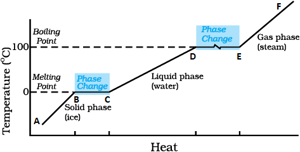
Identify the part representing latent heat of vaporization in the temperature vs heat graph for melting of ice.

